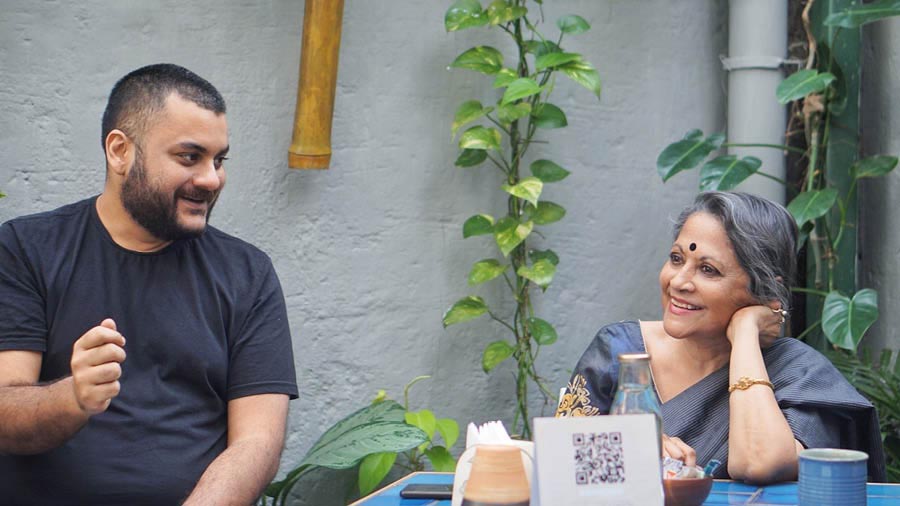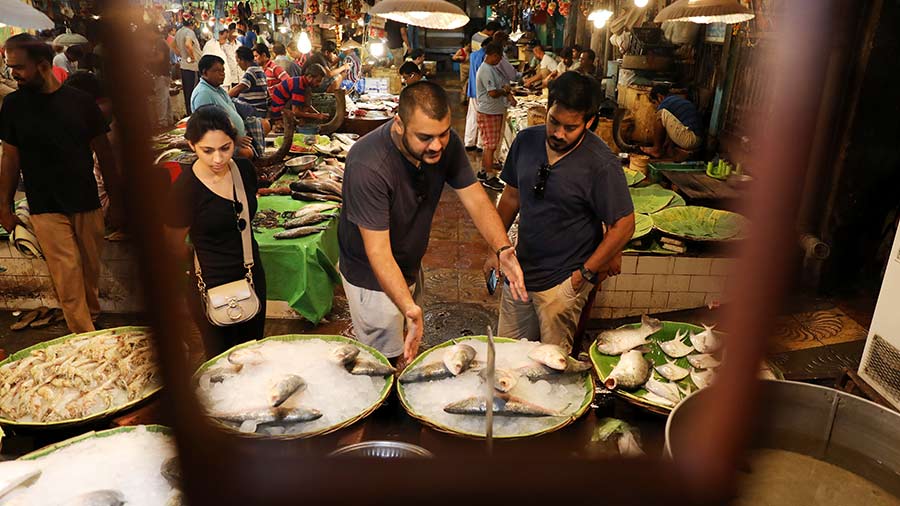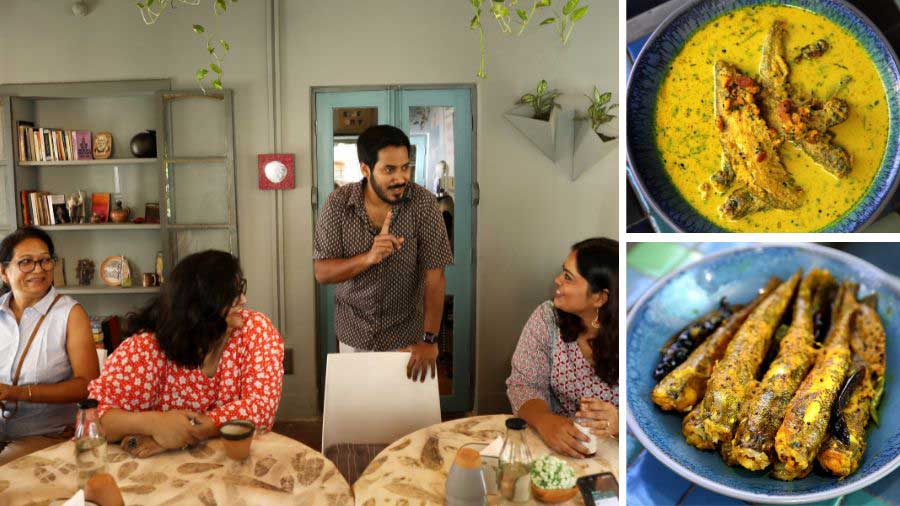Once a month or so, Sienna Cafe hosts a chef or food writer to give its team some perspective. “Culinary school is just the beginning… real education begins in the restaurant. We like to think of Sienna as a teaching kitchen as much as a commercial kitchen and these interactions can be enriching,” said chef Auroni Mookerjee of Sienna Cafe. In December, it was historian of Bengali cuisine, Chitrita Banerji.
Banerji was working as a journalist in 1989 when British publisher Weidenfeld & Nicolson wrote to her about a new food book series, called Life and Food. They wanted to find writers who would write about food from different regions in the context of the culture, religion, history, geography of that particular region. They were not interested in cookbooks. Banerji was so taken aback at first, she almost refused! “Then I thought, Bengali food was something completely unknown and underappreciated outside India and outside Bengal. I also considered the fact that it would be published by a British publisher and would therefore garner outside readership. I thought about giving it a go. The only condition I laid down was that I be allowed to consider the cuisine of not only Bengal but Greater Bengal, i.e., Bengal and Bangladesh,” explained the author. The work was published as Life and Food in Bengal, in November 1991.
And the rest, of course, is history.

Chitrita Banerji signing books for her young fans amongst the Sienna team
Chef Auroni, who has grown up on the books penned by Chitrita Banerji, led the discussion, choosing his themes as carefully as he would pick a bundle of dheki shaak at Gariahat market. And so we have Chitrita Banerji on…
Women and the culinary history of Bengal
“I have always felt that women don’t really get the credit that they deserve. They are always in the background — running the household, providing the food, they decide what is going to be bought from the market and cooked that day but nobody really talks or thinks about it. When food is presented, whether it is a very simple or elaborate meal, people praise the food but rarely do they praise the person who is behind the creation of that food. And that always used to bug me. The women of Bengal were constantly being bound and constrained by rituals and customs. This guided their ability to provide food and the choices they made. At the same time they refused to let that impinge upon their creativity. For example, during a pujo, one can only eat certain things. In my family we observed something called the joy mongolbar – every Tuesday in the month of Joistho, every married woman would have to provide the regular meals for the males in the family, while they only ate some curd, chire and fruits. I believe that the intense variety, delicacy and the elegance of Bengali food goes back to women, even though there were some great male chefs. However, this constant providing of great food is something that we owe to the women of Bengal.”

Some of Banerji’s books. “‘Eating India’ is a travelogue – I wondered what it would be like if a Bengali went out and looked at other food. I even wanted to give it a subtitle: ‘A Bengali investigates India’ but the publisher didn’t like that at all!” she laughs
The Bengali Bajaar Ritual
“It was probably considered easier for a man to wade into the filth and crowd of the market and bargain for the good produce. Equal credit should be given to the person (the woman) who conceptualised the meal and asked the man to go buy it. That however doesn’t happen too often. My family was a little different; my father had exceptional ideas about what was to be done and my mother, who was a legendary cook, was definitely opposed to his ideas and would state ways of making it in a better manner. My father would go and buy the heavy stuff – fish, meat and the like. My mother would go to the market in the evenings when it was less crowded. She loved buying paan, but she never stopped at that. She would wander off and buy different things from the evening market.”
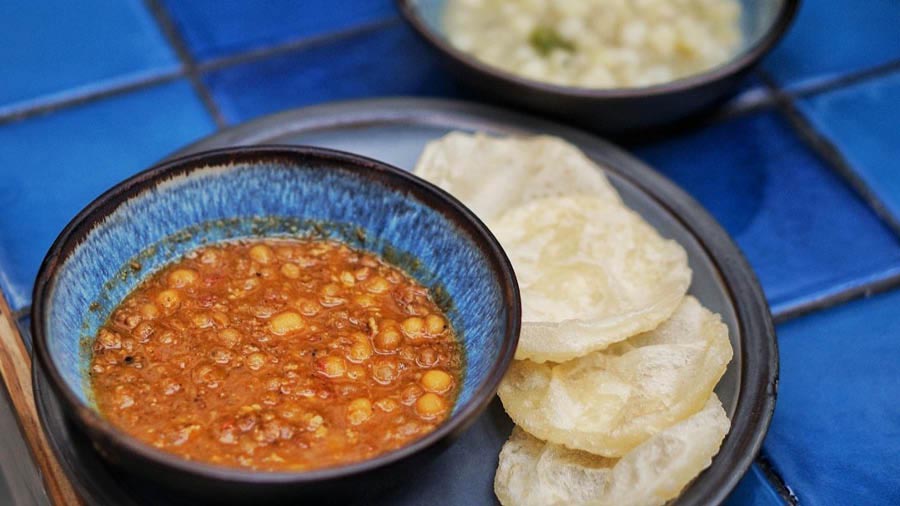
Luchi with Ghugni and Shada Aloo was served for Bengal’s food historian, at Sienna Cafe
Seasonal produce
“Well, nothing is sadder than people buying cauliflower in summer. In Kolkata, however, it is still difficult to get out-of-season things. I think if one loses this consciousness of seasonality, one sort of misses out on comparatively obscure things like the small berries and taal saansh (ice apple). It’s Nature’s way of reminding us to appreciate what is available to us for a short season. But when I talk to people, most of them don’t know a lot about seasonal produce. I am shocked to hear people say they have never had kolmi saak or dheki saak.”
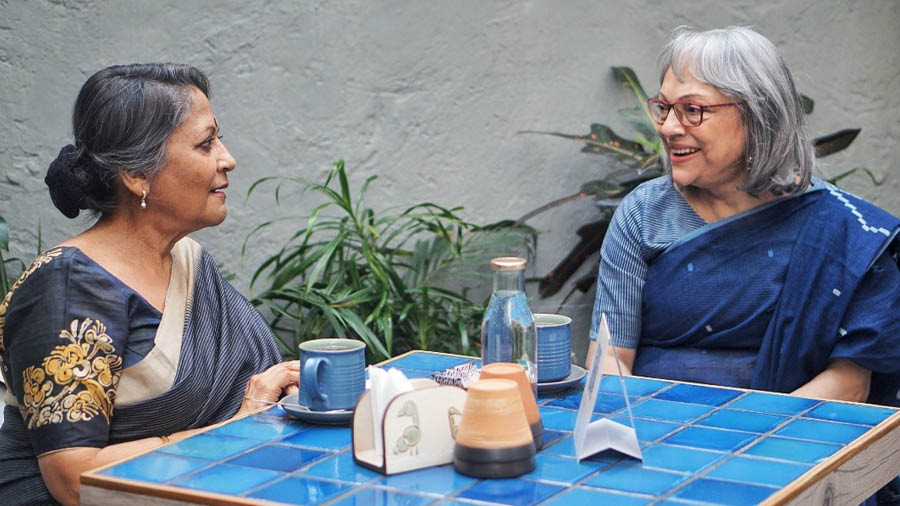
Chitrita Banerji with the proprietor of Sienna Cafe, Shanta Ghosh
Indian food in America
“The West dominates so much of the food narrative, it really makes me feel uncomfortable. I feel, the regional foods of India are the best-kept secrets. For most people living outside, Indian food is still just Tandoori Chicken, Chicken Tikka Masala and some Aloo Gobi. The subtleties of regional cooking are completely unrepresented. It’s a big risk for any restaurant owner to start like that, because if one presents something totally unfamiliar it can be difficult to sell and is a financial risk. But that risk needs to be taken.
My mother lived with us for the last few years of her life in America. When she was 92, she had to transition to using a walker. I would take her downstairs and walk with her for some exercise in the big open space just outside the building. One day a young couple, who had moved into our building, were coming back home, and I introduced them. The guy was amazed when I told him my mother’s age! He said, “Oh she looks so great! Is she on a Mediterranean diet?” My mother became most agitated and cried, “No, no! Bengali diet, Bengali diet!” And he had never heard of it!”

Chitrita Banerji with Sienna friends and family
The truth about Bangladeshi food
“Living in Dhaka, Bangladesh, was an eye-opening experience for me. I got to see the differences in regional cooking. Their cooking was very different from what I was used to. I noticed that similar fish was made available, but the flavours were very different because of the use of spices and the very heavy use of onions and chillies. Eventually I got used to that. Their meat cooking really surprised me. They used combinations that will never be tried out here in Kolkata. For example they would make mangsho with kochu and it would be absolutely delicious. We usually use garam masala in the preparation of chicken in the same proportions. They, however, would have different garam masalas with different heightened infusions every day. They would use a higher proportion of cloves at times.
We think all Bangals love shutki maachh; imagine my surprise when people in Barishal thought it was the worst! I wonder why the habit of eating shutki maachh has not developed in many parts of Bengal despite fish being scarce.
All these conceptions about Bangladeshi food being a certain way is sometimes correct, but often totally incorrect. Yes, people in Chittagong eat very hot food which we won’t be able to. I have tried and failed miserably. But at the same time I could see that if my spice tolerance was higher, some of the items that they were making were really delicious.”
